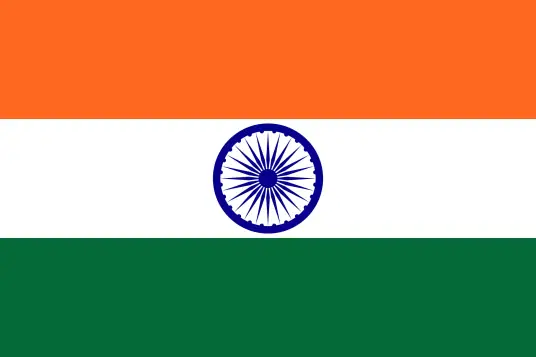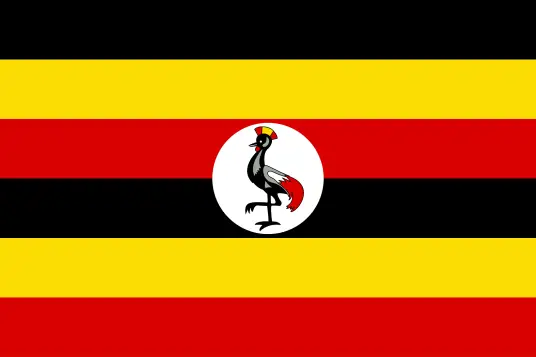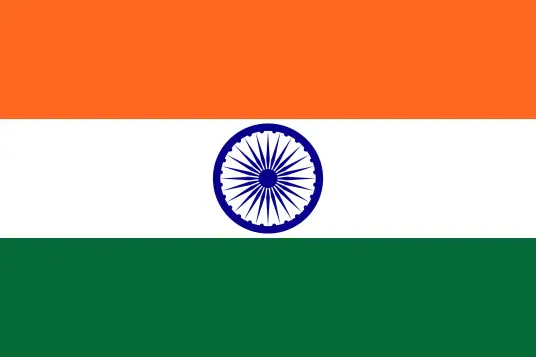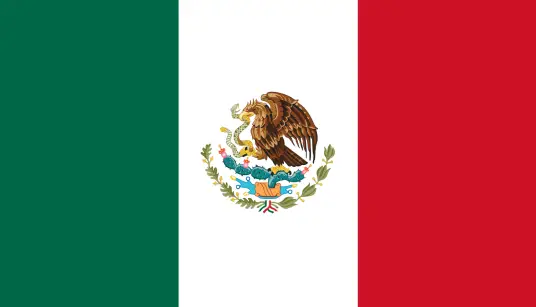
-
 Español
Español
-
 Portugues
Portugues
-
 Pусский
Pусский
-
 Français
Français
-
 Deutsch
Deutsch
-
 日本語
日本語
-
 한국어
한국어
-
 العربية
العربية
-
 Italiano
Italiano
-
 Nederlands
Nederlands
-
 Ελληνικά
Ελληνικά
-
 Svenska
Svenska
-
 Polski
Polski
-
 ไทย
ไทย
-
 Türk dili
Türk dili
-
 हिन्दी
हिन्दी
-
 Indonesia
Indonesia
-
 Melayu
Melayu
-
 Tiếng Việt
Tiếng Việt
-
 中文
中文
-
 dansk
dansk
-
 Magyar
Magyar
-
 қазақ
қазақ
-
 বাংলা
বাংলা
-
 עִברִית
עִברִית
-
 čeština
čeština
-
 Soomaali
Soomaali
-
 မြန်မာ
မြန်မာ
-
 فارسی
فارسی
-
 українська
українська
-
 norsk
norsk
-
 Gaeilge
Gaeilge
-
 беларускі
беларускі
-
 Română
Română
-
 ພາສາລາວ
ພາສາລາວ
-
 Filipino
Filipino
-
 lietuvių
lietuvių
-
 Cymraeg
Cymraeg
-
 македонски
македонски
-
 Suomalainen
Suomalainen
-
 slovenský
slovenský
-
 o'zbek
o'zbek
-
 اردو
اردو
-
 հայերեն
հայերեն
-
 Igbo
Igbo
-
 български
български
-
 سنڌي
سنڌي
-
 Shona
Shona
-
 සිංහල
සිංහල
-
 Hrvatski
Hrvatski
-
 íslenskur
íslenskur
-
 galego
galego
-
 català
català
-
 Zulu South Africa
Zulu South Africa
-
 Afrikaans isiXhosa
Afrikaans isiXhosa
-
 ಕನ್ನಡ
ಕನ್ನಡ
-
 lëtzebuergesch
lëtzebuergesch
-
 Indonésia Sunda
Indonésia Sunda
-
 basa jawa
basa jawa
-
 ગુજરાતી
ગુજરાતી
-
 Кыргызча
Кыргызча
-
 тоҷикӣ
тоҷикӣ
-
 Србија
Србија
-
 Twi
Twi
-
 Hawaii
Hawaii
-
 Cebu
Cebu
-
 नेपाल
नेपाल
-
 euskara
euskara
-
 Kurdî
Kurdî
-
 frissi
frissi
-
 יידיש
יידיש
-
 latvija
latvija
-
 slovenija
slovenija
-
 kiswahili
kiswahili
-
 ਪੰਜਾਬ
ਪੰਜਾਬ
-
 پښتو
پښتو
-
 საქართველოს
საქართველოს
-
 hua moni
hua moni
-
 bosna
bosna
-
 తెలుగు
తెలుగు
-
 தமிழ்
தமிழ்
-
 Kreyòl ayisyen
Kreyòl ayisyen
-
 Eesti
Eesti
-
 Corsica
Corsica
-
 Yoruba
Yoruba
-
 Gàidhlig na h-Alba
Gàidhlig na h-Alba
-
 Samoa
Samoa
-
 Монгол
Монгол
-
 Hausa
Hausa
-
 Azərbaycan
Azərbaycan
-
 አማራ
አማራ
-
 Shqipëria
Shqipëria
-
 Malagasy
Malagasy
-
 मराठी
मराठी
-
 മലയാളം
മലയാളം
-
 Malta
Malta
-
 ខ្មែរ
ខ្មែរ
-
 Chicheva
Chicheva
-
 中文(繁体)
中文(繁体)
-
 ଓଡିଆ
ଓଡିଆ
-
 Setswana
Setswana
-
 Afrikaans
Afrikaans
-
 Aymara
Aymara
-
 Башҡорт
Башҡорт
-
 Türkmenler
Türkmenler
-
 ትግሪኛ
ትግሪኛ
-
 Afaan Oromoo
Afaan Oromoo
-
 অসমীয়া
অসমীয়া
-
 Kinyarwanda
Kinyarwanda
-
 Ilocano
Ilocano
-
 Wolof
Wolof
-
 अवधी
अवधी
-
 Oluganda
Oluganda
-
 Bikol
Bikol
-
 Fulɓe
Fulɓe
-
 Kikongo
Kikongo
-
 Sango
Sango
-
 ދިވެހި
ދިވެހި
-
 Lingala
Lingala
-
 मैथिली
मैथिली
-
 Tsonga
Tsonga
-
 ꯃꯦꯏ ꯊꯥꯏ꯫
ꯃꯦꯏ ꯊꯥꯏ꯫
-
 brezhoneg
brezhoneg
-
 Furlan
Furlan
-
 नेवा
नेवा
-
 རྫོང་ཁ
རྫོང་ཁ
-
 Santali
Santali
-
 Аҧсуа
Аҧсуа
-
 Нохчийн
Нохчийн
-
 Чӑваш
Чӑваш
-
 Татар
Татар
-
 Batak Karo
Batak Karo
-
 دری
دری
-
 Diura
Diura
-
 Fengyu
Fengyu
-
 Eʋegbe
Eʋegbe
-
 Iban
Iban
-
 Fiji
Fiji
-
 Tonga
Tonga
-
 Inuktitut
Inuktitut
-
 Nahuatl
Nahuatl
-
 maaya yucatec
maaya yucatec
-
 Runasimi
Runasimi
-
 guarani
guarani
-
 Qafar
Qafar
-
 Acholi
Acholi
-
 Dinka
Dinka
-
 Luo
Luo
-
 Lundi
Lundi
-
 isiNdebele
isiNdebele
-
 Tshivenḓa
Tshivenḓa
-
 Sesotho sa Leboa
Sesotho sa Leboa
-
 Sesotho sa Borwa
Sesotho sa Borwa
-
 Ndumbe
Ndumbe
-
 Papuan Pidgin
Papuan Pidgin
-
 Rromani ćhib
Rromani ćhib
-
 Thok Nath
Thok Nath
yuxiatugong@163.com
+86 18353494641
-
 Español
Español
-
 Portugues
Portugues
-
 Pусский
Pусский
-
 Français
Français
-
 Deutsch
Deutsch
-
 日本語
日本語
-
 한국어
한국어
-
 العربية
العربية
-
 Italiano
Italiano
-
 Nederlands
Nederlands
-
 Ελληνικά
Ελληνικά
-
 Svenska
Svenska
-
 Polski
Polski
-
 ไทย
ไทย
-
 Türk dili
Türk dili
-
 हिन्दी
हिन्दी
-
 Indonesia
Indonesia
-
 Melayu
Melayu
-
 Tiếng Việt
Tiếng Việt
-
 中文
中文
-
 dansk
dansk
-
 Magyar
Magyar
-
 қазақ
қазақ
-
 বাংলা
বাংলা
-
 עִברִית
עִברִית
-
 čeština
čeština
-
 Soomaali
Soomaali
-
 မြန်မာ
မြန်မာ
-
 فارسی
فارسی
-
 українська
українська
-
 norsk
norsk
-
 Gaeilge
Gaeilge
-
 беларускі
беларускі
-
 Română
Română
-
 ພາສາລາວ
ພາສາລາວ
-
 Filipino
Filipino
-
 lietuvių
lietuvių
-
 Cymraeg
Cymraeg
-
 македонски
македонски
-
 Suomalainen
Suomalainen
-
 slovenský
slovenský
-
 o'zbek
o'zbek
-
 اردو
اردو
-
 հայերեն
հայերեն
-
 Igbo
Igbo
-
 български
български
-
 سنڌي
سنڌي
-
 Shona
Shona
-
 සිංහල
සිංහල
-
 Hrvatski
Hrvatski
-
 íslenskur
íslenskur
-
 galego
galego
-
 català
català
-
 Zulu South Africa
Zulu South Africa
-
 Afrikaans isiXhosa
Afrikaans isiXhosa
-
 ಕನ್ನಡ
ಕನ್ನಡ
-
 lëtzebuergesch
lëtzebuergesch
-
 Indonésia Sunda
Indonésia Sunda
-
 basa jawa
basa jawa
-
 ગુજરાતી
ગુજરાતી
-
 Кыргызча
Кыргызча
-
 тоҷикӣ
тоҷикӣ
-
 Србија
Србија
-
 Twi
Twi
-
 Hawaii
Hawaii
-
 Cebu
Cebu
-
 नेपाल
नेपाल
-
 euskara
euskara
-
 Kurdî
Kurdî
-
 frissi
frissi
-
 יידיש
יידיש
-
 latvija
latvija
-
 slovenija
slovenija
-
 kiswahili
kiswahili
-
 ਪੰਜਾਬ
ਪੰਜਾਬ
-
 پښتو
پښتو
-
 საქართველოს
საქართველოს
-
 hua moni
hua moni
-
 bosna
bosna
-
 తెలుగు
తెలుగు
-
 தமிழ்
தமிழ்
-
 Kreyòl ayisyen
Kreyòl ayisyen
-
 Eesti
Eesti
-
 Corsica
Corsica
-
 Yoruba
Yoruba
-
 Gàidhlig na h-Alba
Gàidhlig na h-Alba
-
 Samoa
Samoa
-
 Монгол
Монгол
-
 Hausa
Hausa
-
 Azərbaycan
Azərbaycan
-
 አማራ
አማራ
-
 Shqipëria
Shqipëria
-
 Malagasy
Malagasy
-
 मराठी
मराठी
-
 മലയാളം
മലയാളം
-
 Malta
Malta
-
 ខ្មែរ
ខ្មែរ
-
 Chicheva
Chicheva
-
 中文(繁体)
中文(繁体)
-
 ଓଡିଆ
ଓଡିଆ
-
 Setswana
Setswana
-
 Afrikaans
Afrikaans
-
 Aymara
Aymara
-
 Башҡорт
Башҡорт
-
 Türkmenler
Türkmenler
-
 ትግሪኛ
ትግሪኛ
-
 Afaan Oromoo
Afaan Oromoo
-
 অসমীয়া
অসমীয়া
-
 Kinyarwanda
Kinyarwanda
-
 Ilocano
Ilocano
-
 Wolof
Wolof
-
 अवधी
अवधी
-
 Oluganda
Oluganda
-
 Bikol
Bikol
-
 Fulɓe
Fulɓe
-
 Kikongo
Kikongo
-
 Sango
Sango
-
 ދިވެހި
ދިވެހި
-
 Lingala
Lingala
-
 मैथिली
मैथिली
-
 Tsonga
Tsonga
-
 ꯃꯦꯏ ꯊꯥꯏ꯫
ꯃꯦꯏ ꯊꯥꯏ꯫
-
 brezhoneg
brezhoneg
-
 Furlan
Furlan
-
 नेवा
नेवा
-
 རྫོང་ཁ
རྫོང་ཁ
-
 Santali
Santali
-
 Аҧсуа
Аҧсуа
-
 Нохчийн
Нохчийн
-
 Чӑваш
Чӑваш
-
 Татар
Татар
-
 Batak Karo
Batak Karo
-
 دری
دری
-
 Diura
Diura
-
 Fengyu
Fengyu
-
 Eʋegbe
Eʋegbe
-
 Iban
Iban
-
 Fiji
Fiji
-
 Tonga
Tonga
-
 Inuktitut
Inuktitut
-
 Nahuatl
Nahuatl
-
 maaya yucatec
maaya yucatec
-
 Runasimi
Runasimi
-
 guarani
guarani
-
 Qafar
Qafar
-
 Acholi
Acholi
-
 Dinka
Dinka
-
 Luo
Luo
-
 Lundi
Lundi
-
 isiNdebele
isiNdebele
-
 Tshivenḓa
Tshivenḓa
-
 Sesotho sa Leboa
Sesotho sa Leboa
-
 Sesotho sa Borwa
Sesotho sa Borwa
-
 Ndumbe
Ndumbe
-
 Papuan Pidgin
Papuan Pidgin
-
 Rromani ćhib
Rromani ćhib
-
 Thok Nath
Thok Nath

News Center
News Center
HOT PRODUCT
Nonwoven Geotextile Fabric for Separation and Filtration
2025-10-09 14:36:29

Nonwoven Geotextile Fabric for Separation and Filtration: A Comprehensive Guide
Introduction
NonWoven Geotextile Fabrics are versatile materials widely used in civil engineering, environmental protection, and construction applications. These fabrics serve two primary functions: separation and filtration. Their unique structure and properties make them indispensable in projects involving soil stabilization, drainage systems, erosion control, and road construction.
This guide explores the characteristics, manufacturing processes, applications, and benefits of nonwoven geotextile fabrics in separation and filtration roles.
---
1. What is Nonwoven Geotextile Fabric?
Nonwoven geotextiles are synthetic textile materials made from polymers such as polypropylene or polyester. Unlike woven geotextiles, which are produced by interlacing yarns, nonwoven geotextiles are manufactured by bonding fibers together mechanically, thermally, or chemically. This results in a porous, felt-like structure that provides excellent filtration and separation properties.
Key Properties:
- High Permeability: Allows water to pass through while retaining soil particles.
- Durability: Resistant to UV degradation, chemicals, and biological agents.
- Flexibility: Adapts to ground movement without losing functionality.
- Tensile Strength: Provides structural reinforcement in various applications.
---
2. Manufacturing Processes of Nonwoven Geotextiles
Nonwoven geotextiles are produced using several techniques, each influencing their physical and mechanical properties.
A. Needle-Punching
- Fibers are entangled using barbed needles, creating a dense, felt-like fabric.
- Provides high tensile strength and puncture resistance.
- Ideal for separation and filtration in road construction and drainage systems.
B. Heat Bonding (Thermal Bonding)
- Fibers are bonded using heat, creating a smooth, uniform surface.
- Offers excellent filtration properties but lower mechanical strength.
- Commonly used in lightweight filtration applications.
C. Chemical Bonding
- Adhesives bind fibers together, forming a stiff but porous structure.
- Less common due to potential environmental concerns.
- Used in specialized filtration applications.
---
3. Functions of Nonwoven Geotextiles
A. Separation
Nonwoven geotextiles prevent the intermixing of dissimilar soil layers, ensuring long-term stability in construction projects.
Applications:
- Road Construction: Separates subgrade soil from aggregate base layers, preventing contamination and rutting.
- Railway Tracks: Enhances track stability by separating ballast from subsoil.
- Landfills: Isolates waste from underlying soil to prevent contamination.
Benefits:
- Extends the lifespan of infrastructure.
- Reduces maintenance costs.
- Improves load distribution.
B. Filtration
Nonwoven geotextiles allow water to flow while retaining fine soil particles, preventing clogging in drainage systems.
Applications:
- Drainage Systems: Used in French drains, retaining walls, and subsurface drainage.
- Erosion Control: Protects slopes and shorelines by filtering water while holding soil in place.
- Stormwater Management: Filters sediments in retention ponds and permeable pavements.
Benefits:
- Prevents soil loss while maintaining hydraulic efficiency.
- Reduces sedimentation in waterways.
- Enhances the performance of drainage structures.
---
4. Advantages of Nonwoven Geotextiles Over Woven Geotextiles
While both woven and nonwoven geotextiles are used in civil engineering, nonwoven fabrics offer distinct advantages in separation and filtration:
| Property | Nonwoven Geotextiles | Woven Geotextiles |
|--------------------------|--------------------------|------------------------|
| Filtration Efficiency | High (better for fine soils) | Moderate |
| Flexibility | Excellent (conforms to uneven surfaces) | Less flexible |
| Puncture Resistance | Good (needle-punched types) | Very high |
| Drainage Performance | Superior (higher permeability) | Lower |
| Cost | Generally more economical | Higher for high-strength types |
Nonwoven geotextiles are preferred in applications requiring high permeability and soil retention, whereas woven geotextiles are better suited for reinforcement.
---
5. Selection Criteria for Nonwoven Geotextiles
Choosing the right geotextile depends on project requirements. Key factors include:
A. Soil Type
- Fine-grained soils (clay, silt) require geotextiles with smaller pore sizes to prevent clogging.
- Coarse soils (sand, gravel) can use geotextiles with larger pores for better drainage.
B. Hydraulic Conditions
- Water flow rate determines the required permeability (measured in m/s or cm/s).
- High-flow applications need geotextiles with high porosity.
C. Mechanical Strength
- Projects with heavy loads (e.g., roads) require high tensile strength.
- Lightweight applications (e.g., landscaping) can use lower-strength geotextiles.
D. Environmental Factors
- UV resistance is crucial for exposed applications.
- Chemical resistance is needed in contaminated sites or landfills.
---
6. Installation Best Practices
Proper installation ensures optimal performance:
1. Site Preparation: Clear debris and level the surface.
2. Roll Placement: Unroll geotextile smoothly, avoiding wrinkles.
3. Overlap Seams: Minimum 12-inch overlap to prevent gaps.
4. Secure Edges: Use staples or ballast to prevent displacement.
5. Cover Immediately: Protect from UV exposure by covering with soil or aggregate.
---
7. Case Studies
A. Road Construction
A highway project in a wetland area used nonwoven geotextiles to separate soft subgrade soil from the aggregate base. The result was improved load-bearing capacity and reduced long-term settlement.
B. Coastal Erosion Control
A shoreline stabilization project employed needle-punched geotextiles beneath rock revetments. The fabric filtered water while preventing soil loss, significantly reducing erosion.
---
8. Future Trends in Nonwoven Geotextiles
- Sustainable Materials: Biodegradable and recycled polymer geotextiles are gaining traction.
- Smart Geotextiles: Sensors embedded in fabrics to monitor soil conditions.
- Nanotechnology: Enhanced filtration using nano-fibers for finer particle retention.
---
Conclusion
Nonwoven geotextile fabrics are essential in modern civil engineering, offering unmatched separation and filtration capabilities. Their versatility, durability, and cost-effectiveness make them ideal for road construction, drainage systems, erosion control, and environmental protection. By selecting the right geotextile and following proper installation practices, engineers can ensure the longevity and sustainability of infrastructure projects.
As technology advances, nonwoven geotextiles will continue to evolve, providing even more innovative solutions for soil and water management challenges.








 Phone
Phone
Comment
(0)